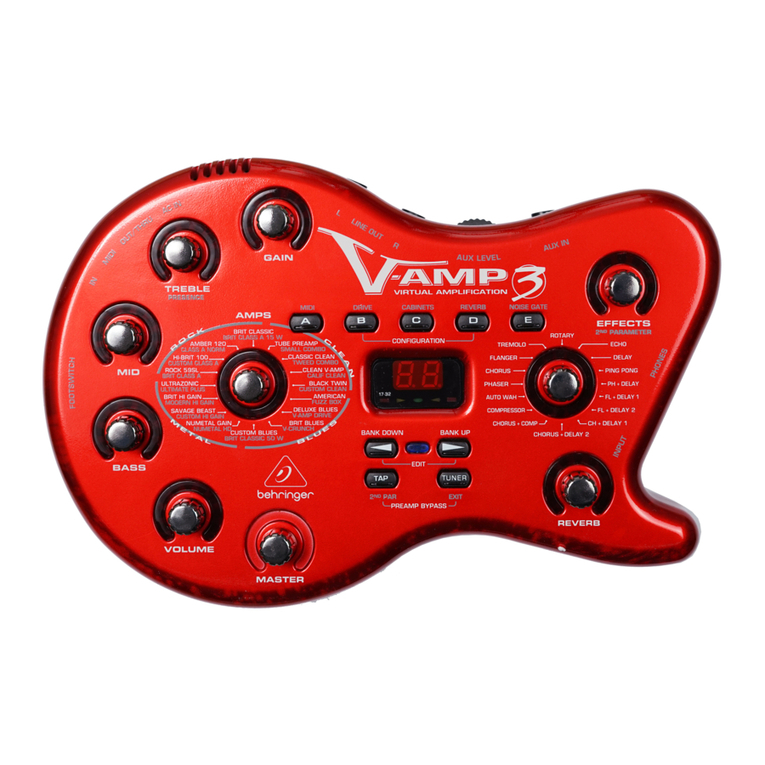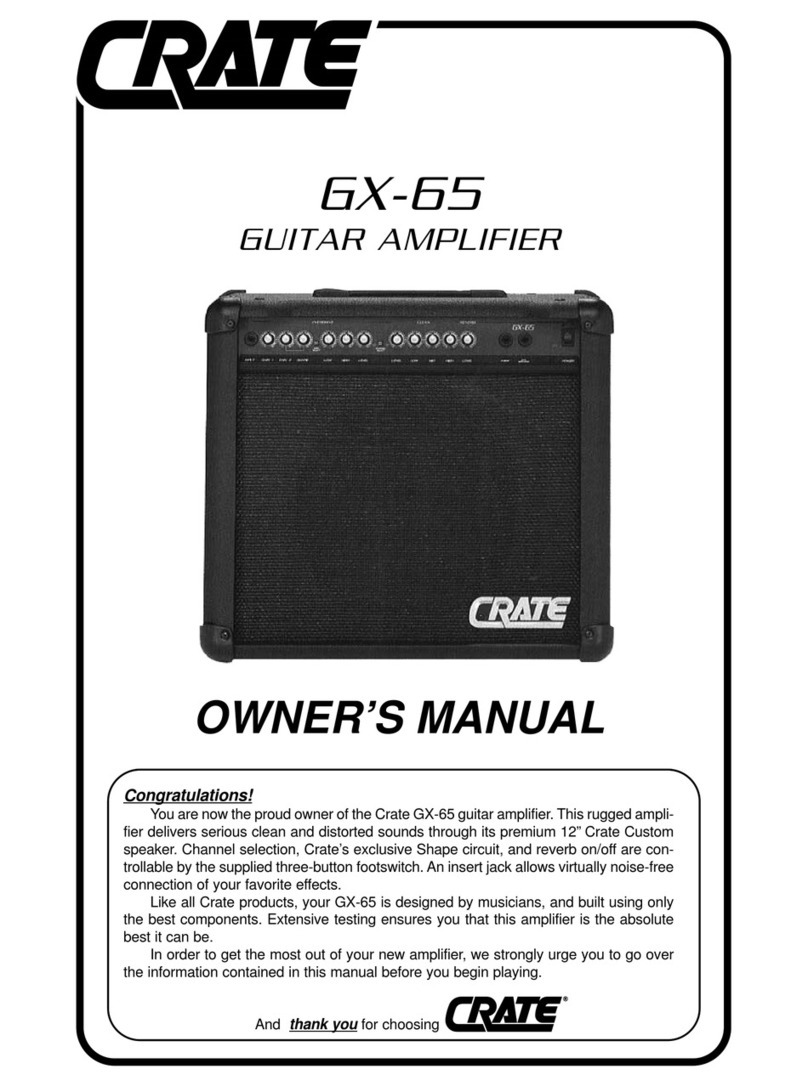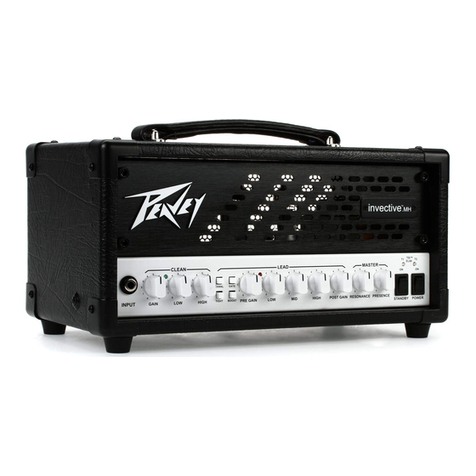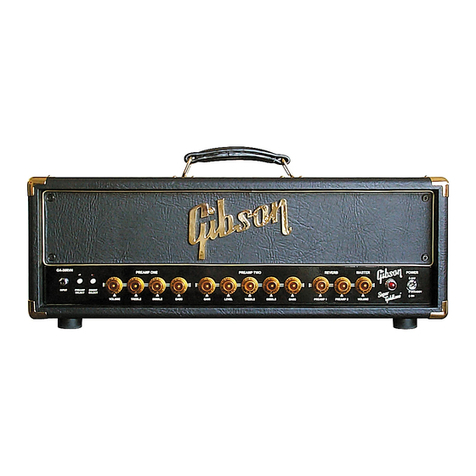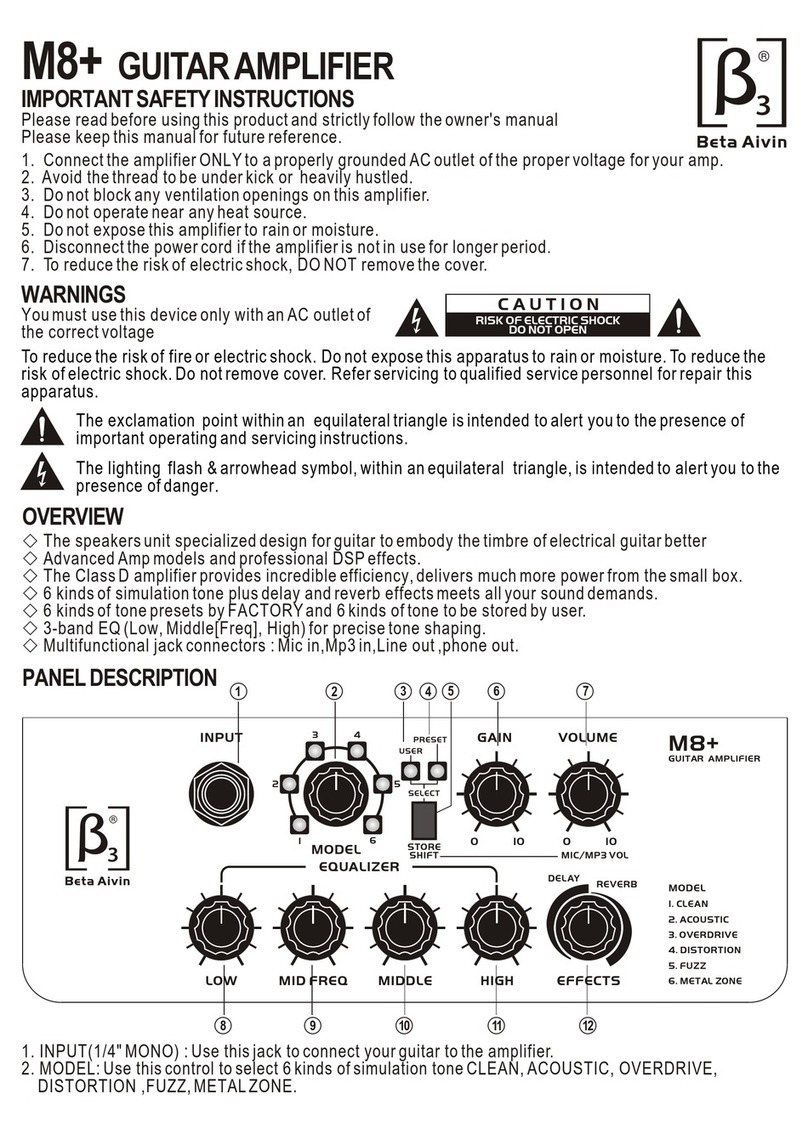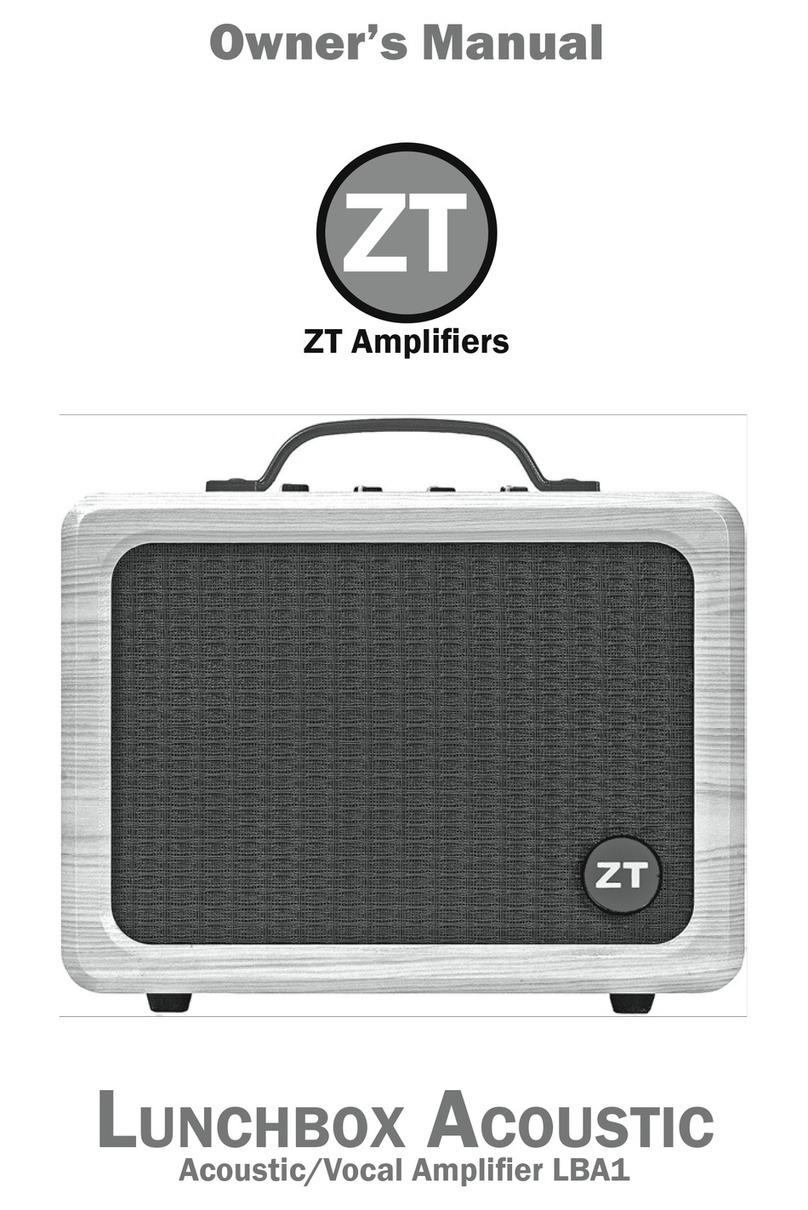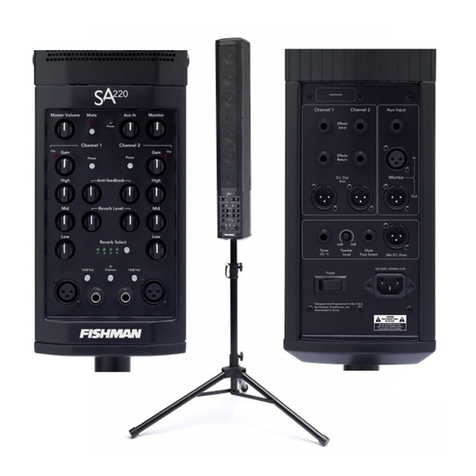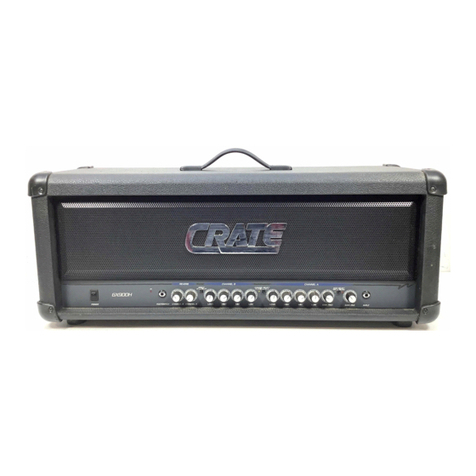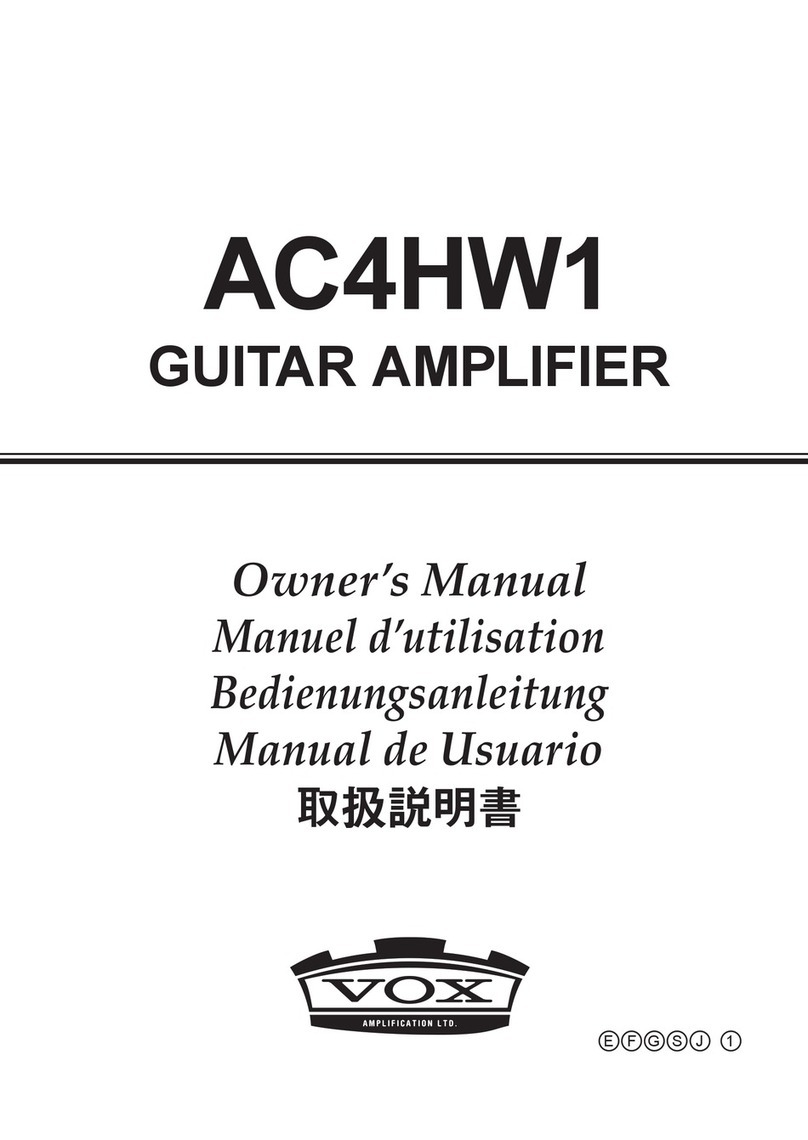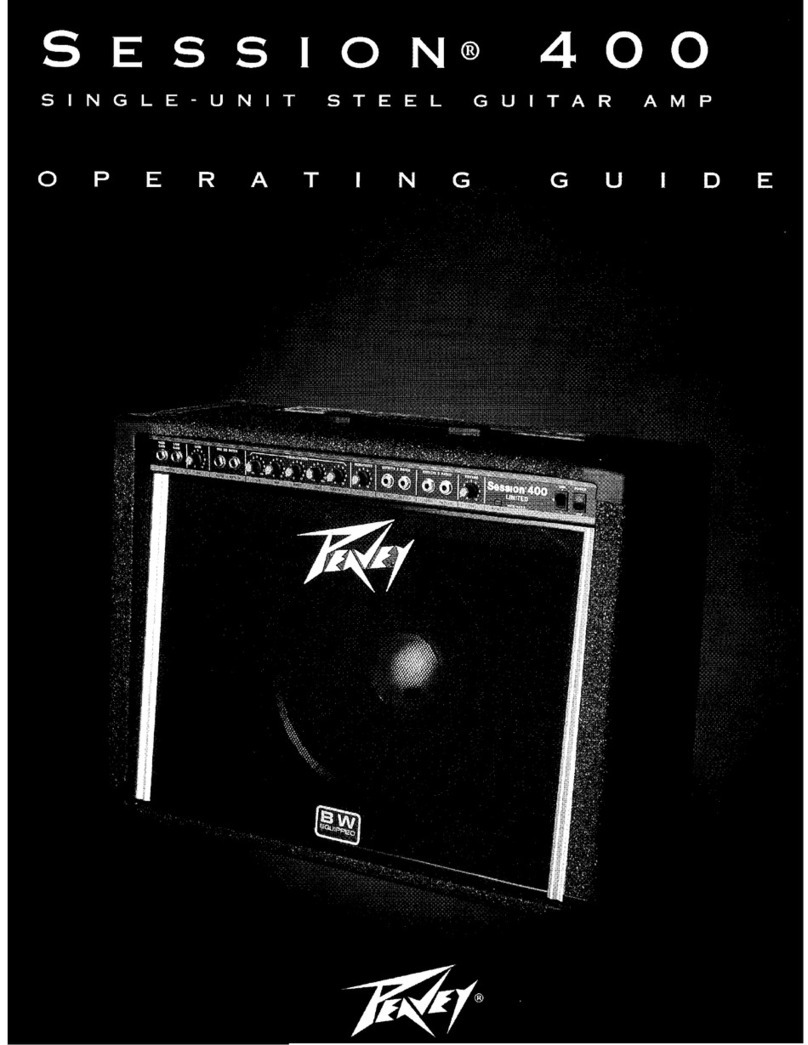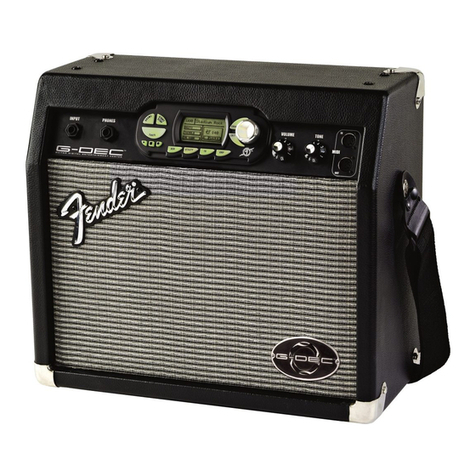Diamond Amplification Assassin User manual

OWNER’S MANUAL

Thank you for the purchase of your new Diamond
Amplification guitar amplifier. This amplifier is of
the highest quality and will give you years of
enjoyment if it is well maintained. Before you
begin, remember, learn your amp and you’ll be in
the best position to achieve the tones and
performance you want. So please take the time to
read this manual. Afterwards, enjoy the finest in
tone and American craftsmanship – Diamond
Amplification.
Jeff Diamant
President/CEO

OWNER’S MANUAL
FEATURES.............................................................................................................................1
FRONT PANEL.......................................................................................................................1
REAR PANEL ........................................................................................................................1
MAKING CONNECTIONS .....................................................................................................1
POWER/STANDBY ............................................................................................................... 2
DIALING IN ............................................................................................................................ 3
TONE/VOLUME CONTROLS ..................................................................................... 3
MODE SWITCH ..........................................................................................................4
TUBES ...................................................................................................................................4
TUBE TYPES ..............................................................................................................4
CHANGING/REPLACING TUBES .............................................................................. 4
DIAGNOSING TUBE PROBLEMS .............................................................................. 4

ASSASSIN OWNER’S MANUAL PAGE 1 OF 5
This manual will walk you through the features, controls and tonal possibilities available to
you. It is highly suggested that you read through this manual in its entirety before dialing in
your new tone! The information in this manual will familiarize you with this amp’s capabilities,
FEATURES
•18 watts (2 x EL84 - 3 x 12AX7A-C)
•2 gain modes
•Volume, Gain, Bass, Middle, Treble, Presence
•1x 16ohm output, 2x 8ohm outputs
•Prewired for appropriate region voltage
•Unique Diamond inset Tolex wrapped front panel with plexiglass insert and etched
zinc steel logo.
•All components specifically spec'd and tested by Diamond before inclusion in the
product.
•Compact design for portability and convenience
FRONT PANEL
REAR PANEL
MAKING CONNECTIONS
Power. As always, plug your power cable in first.
Your amp comes prewired for your region’s voltage. Rewiring for an alternate voltage should
only be done by a qualified technician and may not be possible to rewire for alternate
voltages depending on your particular amplifier.

ASSASSIN OWNER’S MANUAL PAGE 2 OF 5
Speakers. Your DA product comes equipped with three speaker jacks. Always ensure,
when connecting speakers, that you use a high quality speaker cable. Never use instrument
cable to connect your amp to speakers and never put effects between your amp and
speakers.
If you are using one speaker cabinet, you can plug into either of the 8ohm speaker jacks if
your cabinet is 8ohms, or the 16ohm jack if your cabinet is 16ohms. If you are unsure of the
impedance of your speaker cabinet, please find out before making your connection.
If you are using two speaker cabinets, you should use the two 8ohm jacks.
Never use your amp without a load! Doing so is likely to damage your amp!
Instrument. Plug your guitar into the input jack.
POWER/STANDBY
Always keep the Power switch off when unplugging and plugging in to your power source.
Once the amp is turned on (the jewel light will illuminate to indicate power is on), and when
you have made all the appropriate connections, take the amp off standby. Allow the amp to
warm up for several minutes before playing for optimal result.

ASSASSIN OWNER’S MANUAL PAGE 3 OF 5
You should always return the amp to standby before turning off to allow the amp to
“discharge” voltage. Doing this habitually will extend the life of your amp.
DIALING IN
THE TONE/VOLUME CONTROLS
Volume/Gain. As with any amp, the gain control dictates the amount of saturation, break up
or distortion of the channel. The higher the gain, the more the channel distorts. Like any
good tube amp, this amp is very sensitive to the signal it is being fed. Think of it like a car,
the more you press down on the gas, the more then engine turns over, hence, the car goes
faster. Well your pickups are your gas pedal. The hotter the pickup, the more crunch you’ll
get out of the amp. So, with a low output (maybe, say, a single coil), the more sweep you
have on the gain knob before the amp will start to provide more crunch. For us metal
players, our super high output pickups will cause this channel to distort much more quickly.
For gain settings, generally your cleaner tones will be lower on the gain knob and the higher
you run it up, the more crunch you’ll get out of the channel. But volume and gain interplay.
Assume you dime the gain, but set the volume to 1. Then set your volume to the desired
level, dial in tone controls and play!
Bass. This will increase or decrease the “low end” in your guitar sound.
Middle. The mid-range of an amp is by far the most critical tone range. Remember, guitar is
a predominately mid-range instrument. Suck out the mids and try hearing yourself in the mix.
So adjust to taste. This is the most important of the controls.
Treble/Presence. The interplay between treble and presence is always unique. Depending
on how your old amp was designed, sometimes they work backwards, sometimes one
doesn’t work, sometimes they work like you’d expect. So, forget what amp(s) you’ve used

ASSASSIN OWNER’S MANUAL PAGE 4 OF 5
before. Here is how they work on this amp. Your treble knob really will decrease and
increase high end frequencies. DO NOT use your Treble knob for “brightness.” That is the
function of the Presence knob. Presence on this amp could be labeled “brightness.” If you
want your tone more aggressive, roll the presence up. If you want to smooth it out a bit, bring
it down. Pretty simple, huh?
NOTE: Work your guitar’s volume knob and listen to how well the amp cleans up. Try
a setting with more gain, then roll off your guitar’s volume to clean it up, rolling the volume
back up for grittier passages or leads.
MODE SWITCH
Your amp comes with a “Mode” switch that switches between two different gain styles. Try
them both and use your preferred mode. It is normal to hear some volume difference
between the two modes.
TUBES
TUBE TYPES
Your amp uses EL84 power tubes and 12AX7A-C power tubes. It can be retubed with any
EL84 or 12AX7 tubes.
CHANGING/REPLACING TUBES
Preamp tubes have a much longer life than power tubes. You are not likely to have to
replace them unless one or more tubes fail. Generally, any good 12AX7, ECC83 or
replacement tube will be OK, although they can change your amp’s tone.
If you play regularly, power tubes should be changed every 6 months to a year. If you don’t
play frequently, they can last longer. NOTE: While power tubes can simply and suddenly
fail, they generally degrade over time. So while your tubes may be working, they will
not sound the same as they get older. People often go years with the same power tubes
and never replace them claiming, “Well, they still work fine.” You can be assured that the
amp, however, does not sound the same as it does with new, functioning tubes. DON’T
WAIT UNTIL YOU HEAR A DIFFERENCE. FOLLOW A REGIMENTED TUBE CHANGING
SCHEDULE TO AVOID HEARING A DIFFERENCE.
Your amp is “cathode-biased” so you do not need to re-bias when changing power tubes.
Just purchase a “matched” set of EL84’s. We do not recommend replacing only one tube.
DIAGNOSING TUBE PROBLEMS
Most tube amp problems relate to the tubes themselves. After all, tubes are not the cutting
edge of technological advancement. DA tube choices are based both on tone and reliability.
Nevertheless, tube problems are not infrequent occurrences. But before you have to worry
about shipping your amp for repairs, learning to diagnose a tube problem can keep you
rockin’.

ASSASSIN OWNER’S MANUAL PAGE 5 OF 5
If you read the preceding section, you’ve learned when and how to change your tubes. We
can not stress enough the importance of changing tubes to keep your amp running optimally.
But even with regular maintenance, you can still have tube problems. If you are playing out
regularly, we suggest you keep a spare set of power tubes in your gig bag and maybe a few
preamp tubes just in case.
Crackling, squeals and feedback, excessive noise and muddiness or low output are all
evidence of tube problems.
Power tubes. The two main symptoms of a power tube problem are a blown fuse or a tube
that begins to glow cherry red. Either are typically indicative of a power tube failure. Some
failures can be an intermittent short and some can be a tube failure. If you blow a fuse,
replace it. If it happens again, replace your power tubes. If the tube glows cherry red, shut
the amp off immediately. As power tubes are wired in pairs, a failure of this nature in one
tube can cause the other tube in the pair to fail with it. If you encounter this problem, as
noted, shut the amp down immediately. Wait a few minutes and fire it back up. If it happens
again, replace the tubes before using the amp again. If not, you should probably still replace
the tubes soon, but you should be able to operate the amp for a short period of time.
In the event you have one or two power tube failures, you can replace that one tube or two
tubes to get you through a show, but then replace all four with a matched set (see the
preceding section).
If you are hearing noise and/or crackling, you can rule out (or in) a power tube with a simple
test. Gently tap on the power tubes, one at a time. They should not make noise. If noise
changes with the tapping, you may have a failing power tube. Always be prepared to shut
the amp off in case you have a failing tube and the tap causes it to short. If so, shut the amp
off immediately and replace the tubes.
Preamp Tubes. Preamp tubes usually cause problems through noise or microphonics. If
noise, you will hear hiss, crackling, popping or similar issues. If you hear squeal, hum or
feedback, it is typically a microphonic tube. Noise from microphonic tubes will typically
increase with a volume increase.
To diagnose which tube is bad, the most important thing is to determine, if possible, whether
the problem is on both channels or just one. If you can tell that it is in both channels (even if
only slightly on one channel), it is most likely V1, which is common to both channels. A noisy
or microphonic tube in this position will affect the entire amp. Microphonic or noisy tubes in
several other positions may not be audible at all. You can try tapping the tubes like you did
the power tubes and see if the problem worsens. It is normal to hear a slight ring when you
tap on preamp tubes. This test is only to see if the identified problem changes when tapping.
This test is NOT outcome determinative.
NOTE: It is always advisable to change preamp tubes one at a time. It is a good idea
to keep at least one known good preamp tube for this purpose. Then you will know for
sure if you have found the problem.

DIAMOND AMPLIFICATION, INC.
HOUSTON, TEXAS
www.diamondamplification.com
Table of contents
Other Diamond Amplification Musical Instrument Amplifier manuals

Diamond Amplification
Diamond Amplification Heretic User manual
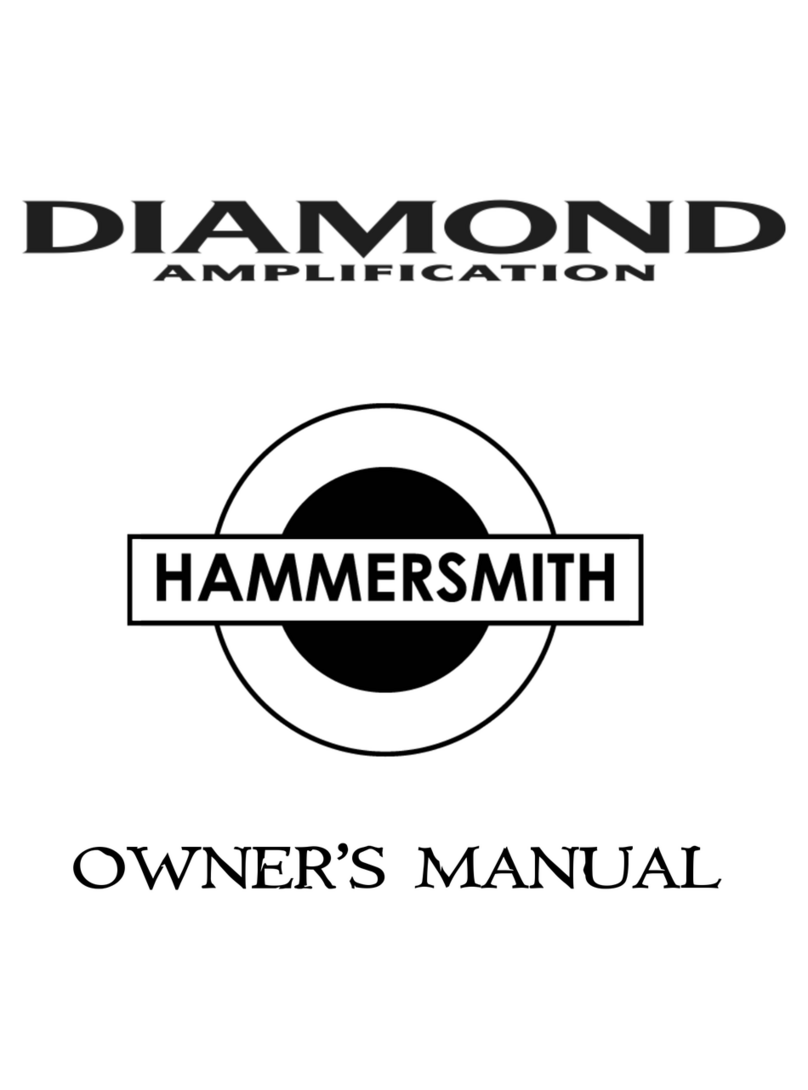
Diamond Amplification
Diamond Amplification Hammersmith User manual
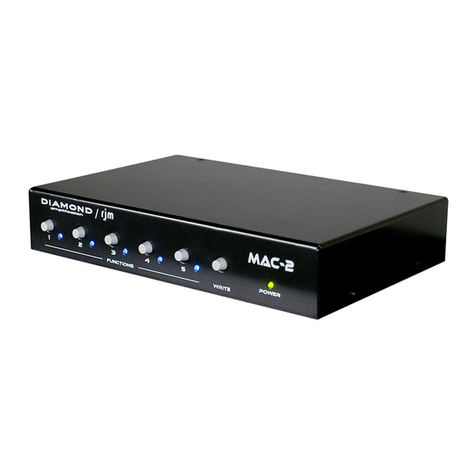
Diamond Amplification
Diamond Amplification MAC-2 User manual
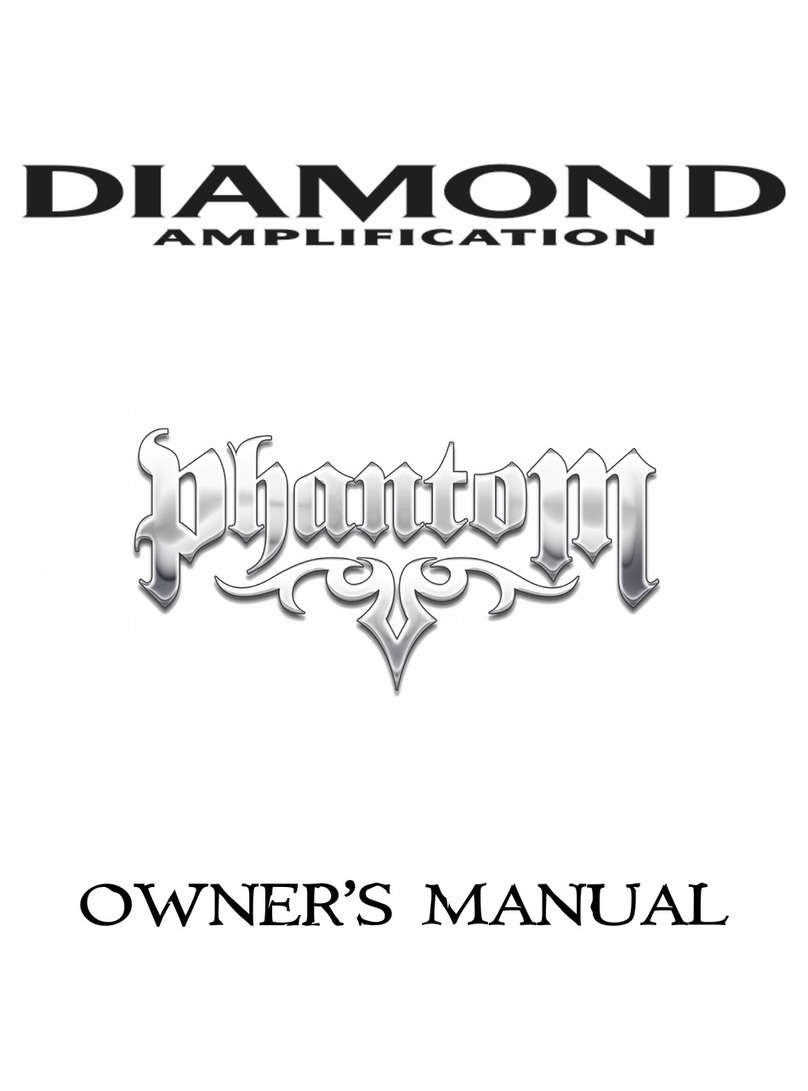
Diamond Amplification
Diamond Amplification Guitar Amplifier User manual
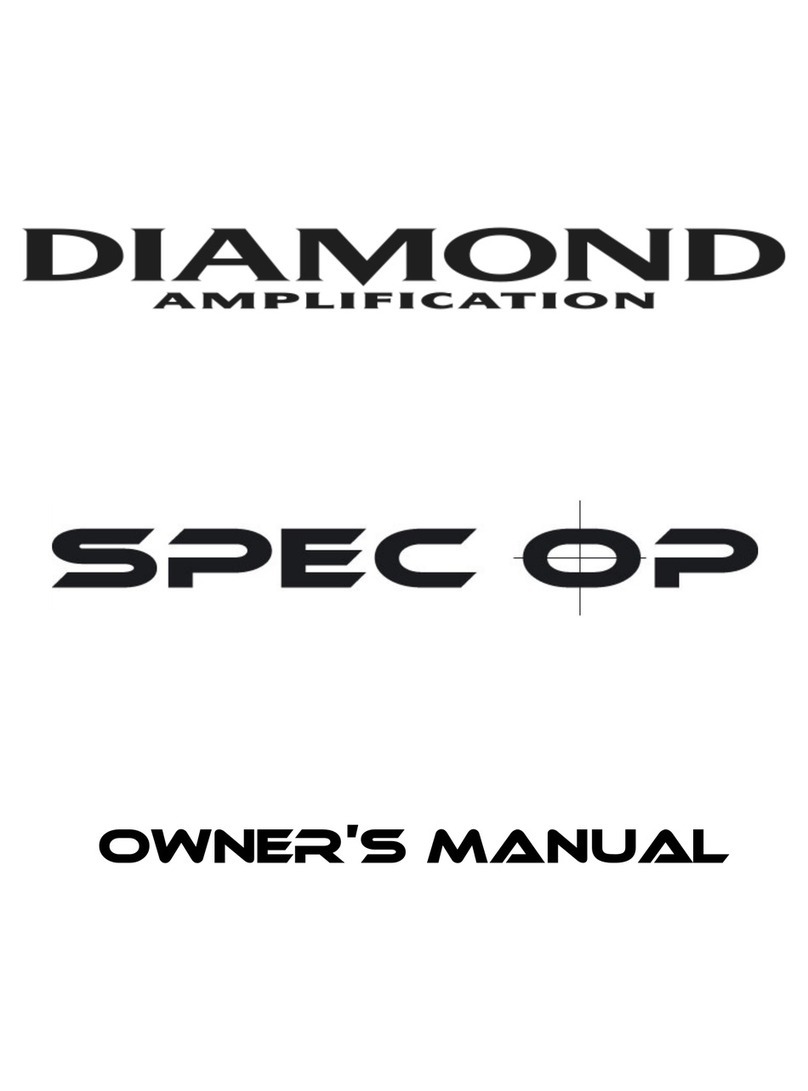
Diamond Amplification
Diamond Amplification Spec Op User manual
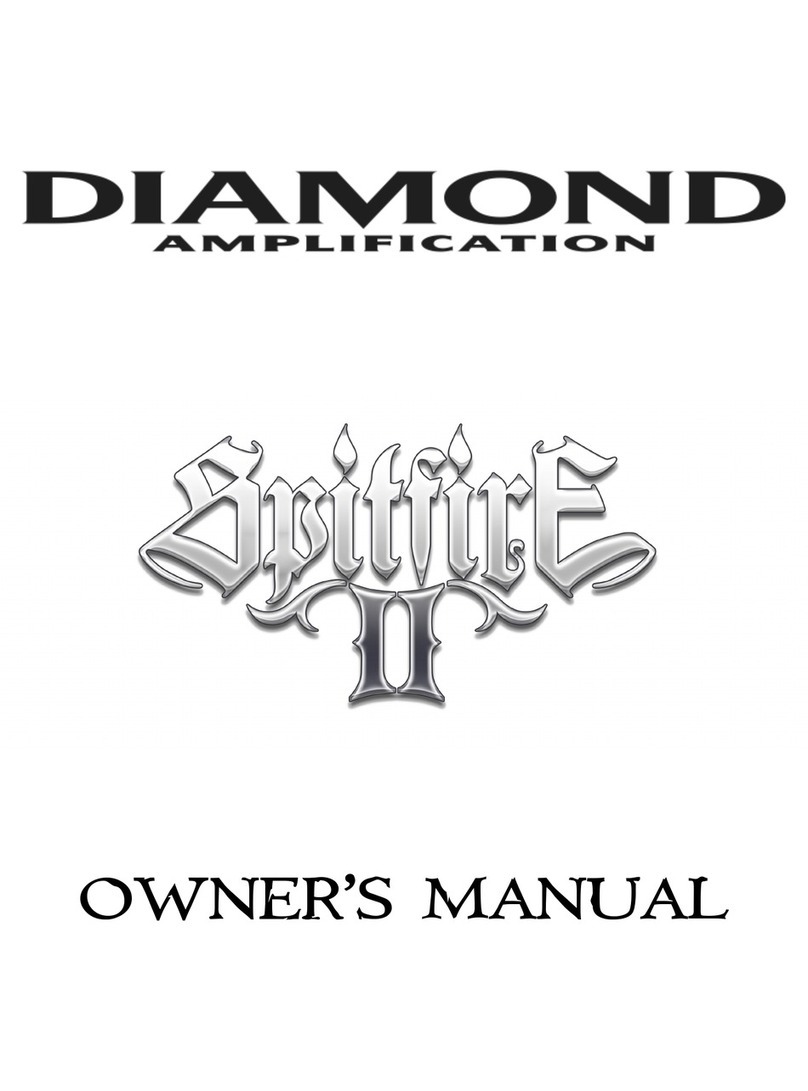
Diamond Amplification
Diamond Amplification Spitfire II User manual
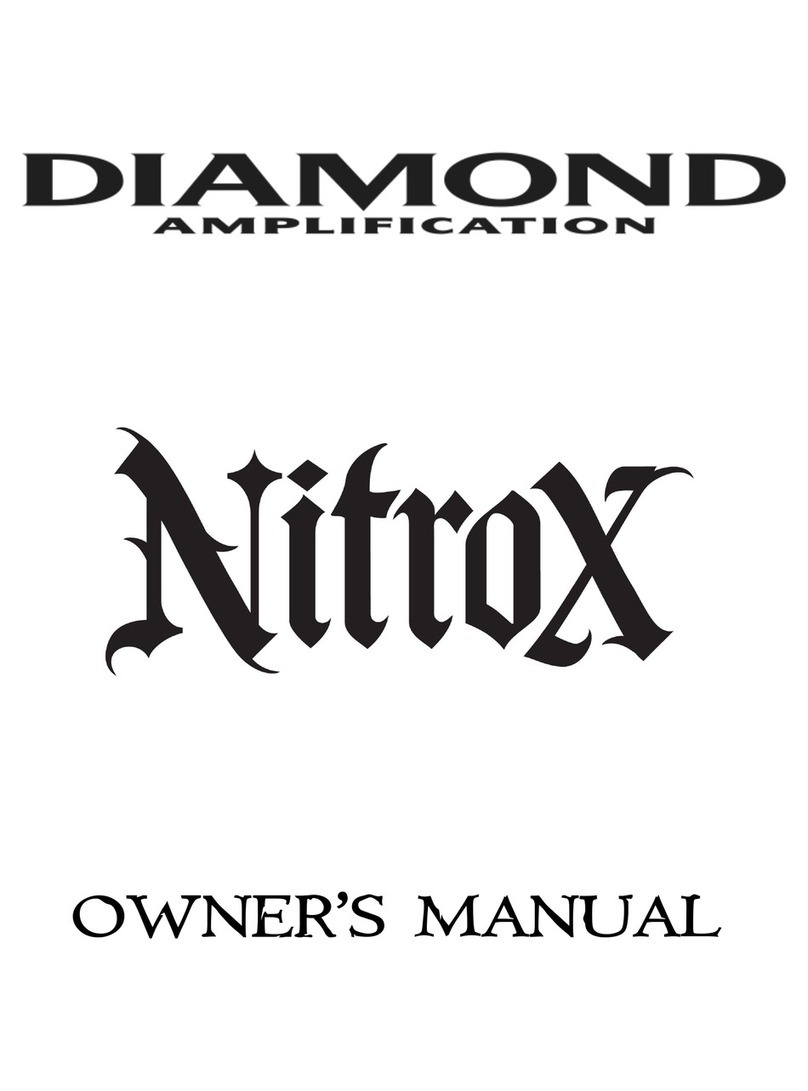
Diamond Amplification
Diamond Amplification Nitrox User manual

